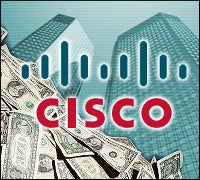 |
Commercial buildings use a lot of power, not all of it wisely. It’s an area that Cisco sees as being ripe with opportunity to help energy producers, building managers and the cities in which they exist all manage power more efficiently.
Cisco (NASDAQ: CSCO) today announced a new initiative — dubbed Smart Connected Buildings — to connect building systems together so they can be controlled and managed for power utilization and efficiency.
The new market area is one that Cisco executives forecast to be worth $12 billion over the next several years. The Smart Connected Buildings initiative includes a number of new products and builds on Cisco’s EnergyWise initiative announced earlier this year.
“The Smart Connected Building solution is focused on energy management for all building systems and devices — things like facilities items like heating, air conditioning and lighting,” Marthin De Beer, senior vice president of Cisco’s emerging technologies group, said during an online press conference announcing the solution.
“What we are going to be all about when it comes to Smart Connected Buildings will be to have all of these building systems connect to an IT network,” he said. “This IT network will enable everything to communicate, and instead of having a single view of energy use across an entire building, we will be able to see how energy efficient each of systems are, and we can set policy for how the systems work together and how energy gets used on a granular level.”
Cisco’s EnergyWise program began with an effort to control energy use in IT systems. With the new Smart Connected Building initiative, De Beer explained that a building can be enabled to turn on lights and air conditioning when an employee enters the building and turn them off when employees have left.
Additionally, any other unnecessary systems that are left on when there is no one in a building can be turned off.
[cob:Special_Report]As part of the solution, Cisco will enable building managers to have a central policy server so they can even control groups of buildings. According to De Beer, Cisco’s early trials has produced energy savings of 15 to 25 percent as a result of deploying Smart Connected Building solutions.
At the core of the solution is the Cisco Network Building Mediator, which is the physical hardware that connects the building systems together and provides energy utilization policy.
Two versions of the Mediator are currently available. The Cisco Network Building Mediator 4800 has support for up to 5,000 energy information points, with each point representing a single item of information in a building control system — a room’s temperature, duct pressure of an air handling unit (AHU), and chiller water flow rate. The Cisco Network Building Mediator 2400 has support for up to 1,000 points.
Market opportunity
De Beer noted that over the next two to three years, Cisco forecasts the total Smart Connected Building market for building overhauls to be worth $12 billion.
It also expects that figure to grow to $20 billion by 2015.
“We think the Smart Connected Building piece will be a billion-dollar-plus business for Cisco, hence the announcement of this new technology,” De Beer said. “We don’t announce any new emerging technology if we don’t think they have the potential to be a billion-dollar business for Cisco.”


